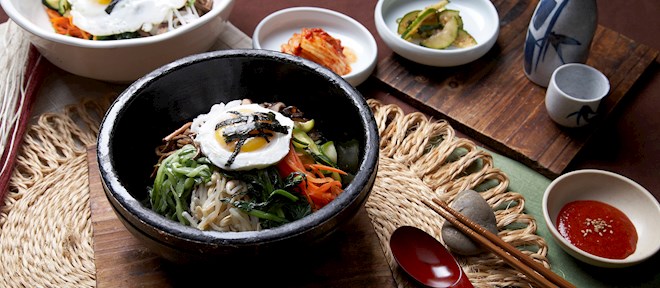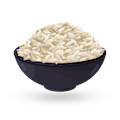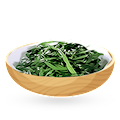Korean Rice Dishes
& producers

No results.
Try changing the search filters.Korean Rice Dishes

Bibimbap
Bibim means mixed, and bap means cooked rice, so bibimbap is literally mixed rice. The rice is combined with a variety of ingredients such as sliced beef, namul (sliced vegetables), soy sauce, gochujang... READ MORE
Gimbap
Often referred to as Korean sushi, gimbap is a Korean dish consisting of seaweed (gim), seasoned rice (bap), and other, optional ingredients that are usually rolled, sliced, and served. Almost anything can be added to th... READ MORE
Tteokbokki
Tteokbokki is a spicy stir-fried dish that usually consists of cylinder-shaped rice cakes, sweet red chili sauce, and fish cakes. It is considered to be one of the top street food items in Korea, and can usually be bought from street vendors known... READ MORE
Tteok
Tteok are traditional Korean rice cakes that are prepared with glutinous or non-glutinous rice. The cakes are incredibly versatile, and although they are mostly sweet and enjoyed as a dessert, some plain varieties can be incorporated into savory d... READ MORE
Kimchi bokkeumbap
Kimchi bokkeumbap is a simple South Korean dish made with a combination of fried rice and kimchi. It is considered to be a great way to use leftover kimchi. The dish can also be enriched with additional ingredients such as meat, vegetables, and so... READ MORE
Samgak gimbap
Samgak is a triangle-shaped variety of gimbap—South Korean rice roll. It consists of various fillings that are neatly placed inside a piece of triangle-shaped rice. The pouches are then wrapped in seaweed (gim) and are typically add... READ MORE
Injeolmi
Injeolmi are traditional South Korean steamed rice cakes. They are prepared by steaming and pounding rice into a pliable dough which is then rolled and generously dusted with roasted soybean powder. The varieties include ssuk injeolmi, wh... READ MORE
Chamchi gimbap
This gimbap (Korean rice roll) is made with canned tuna. Apart from rice and fish, the fillings may include other ingredients that are typically used in gimbap such as fresh or pickled vegetables, eggs, or fish cakes, while the tuna is of... READ MORE
Nurungji
Nurungji is the South Korean version of scorched rice—a crispy and nutty layer of golden-brown rice that forms at the bottom of the pan. This simple snack is prepared with pre-cooked rice, or it can be a by-product of cooking rice. Nurungji ... READ MORE
Mayak gimbap
Mayak is a popular variety of South Korean rice rolls (gimbap). These mini versions of the standard roll consist of rice, toasted seaweed, and fillings that traditionally include carrots, pickled radish, and spinach. Unlike the traditional gimbap,... READ MORE
Boribap
In its basic form, boribap is a South Korean dish consisting of steamed rice and barley that are served with doenjang stew (fermented soybean) and a variety of side dishes (banchan). The dishes served with boribap are typically vegetarian and may ... READ MORE
Chungmu gimbap
As the name suggests, this gimbap (kimbap) variety originated in Chungmu—present day Tongyeong City. These simple rolls are prepared with rice that is wrapped in toasted seaweed. Usually thin and almost bite-size, the rolls never in... READ MORE
Hoedeopbap
Hoedeopbap is a Korean rice bowl that is topped with raw fish and slices of fresh vegetables. Although similar to the Japanese kaisendon, this Korean version is finished off with the addition of a sweet and spicy sauce that usually combin... READ MORE
Ogokbap
Glutinous rice or plain white rice is typically combined with four other grains and beans in this traditional South Korean rice dish called ogokbap or five-grain rice. The selection of grains and beans varies between different regions, bu... READ MORE
Baekseolgi
This traditional Korean rice cake is usually enjoyed on various special occasions. It is made with rice flour, sugar, water, and salt which are carefully combined and then steamed until the cake is light and chewy. Baekseolgi is always white, symb... READ MORE
Kongnamulbap
Kongnamulbap is a traditional type of bibimbap originating from South Korea. The dish consists of rice cooked with soybean sprouts. Other ingredients such as ground meat (beef or pork), kimchi, garlic, and sesame oil are often added to the dish fo... READ MORE
Nude-gimbap
Nude gimbap is a variation of a traditional Korean rice roll in which toasted seaweed (gim) is wrapped inside the rice—leaving the rice exposed, hence the name. Apart from that, nude gimbap typically incorporates standard fillings that mainl... READ MORE
Garaetteok
Garaetteok are long, cylindrical Korean rice cakes that are usually cut diagonally into smaller round discs. Although they can be enjoyed on their own, because of their neutral flavor, the cakes are easily incorporated into various dishes. The sli... READ MORE








